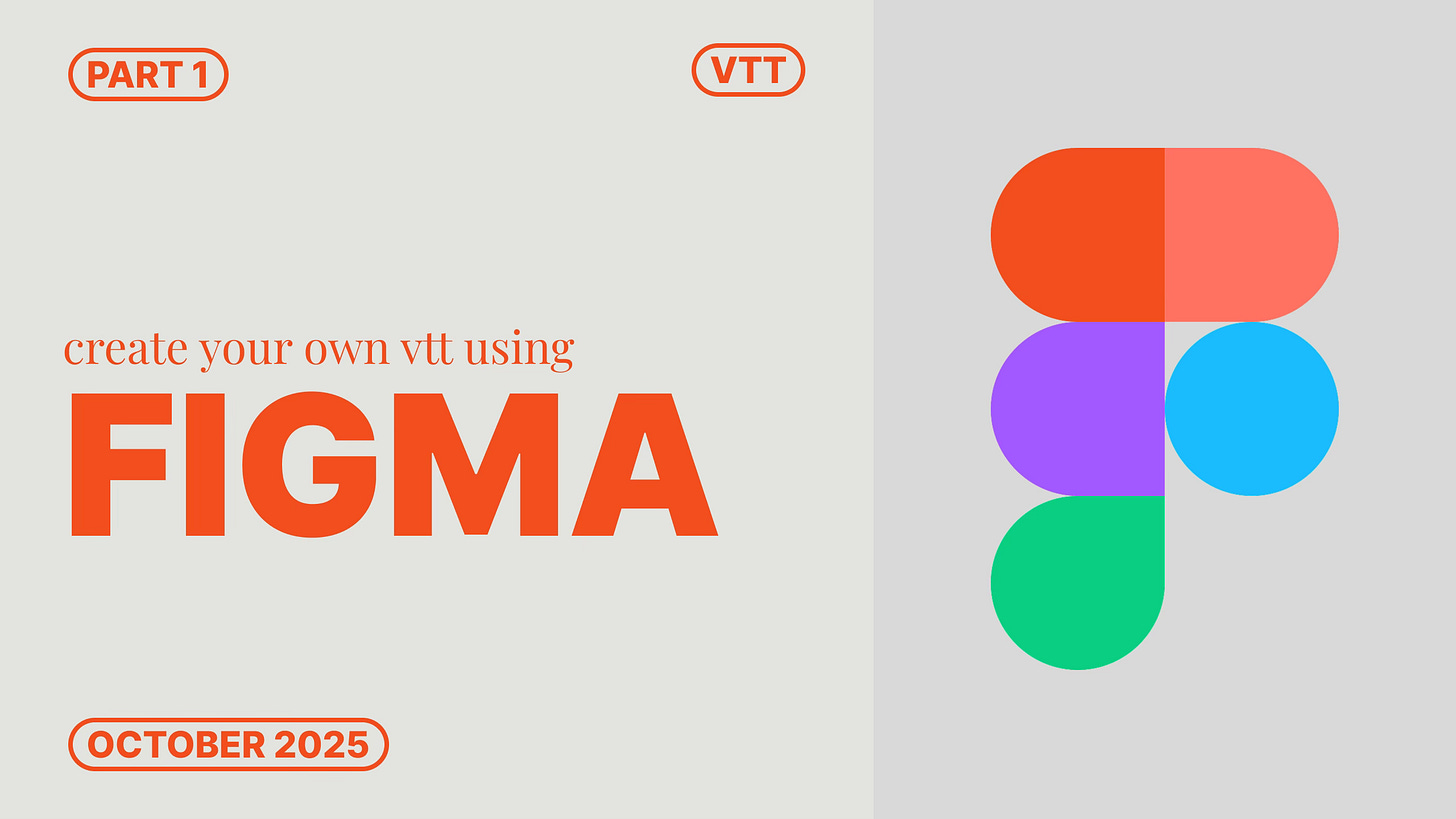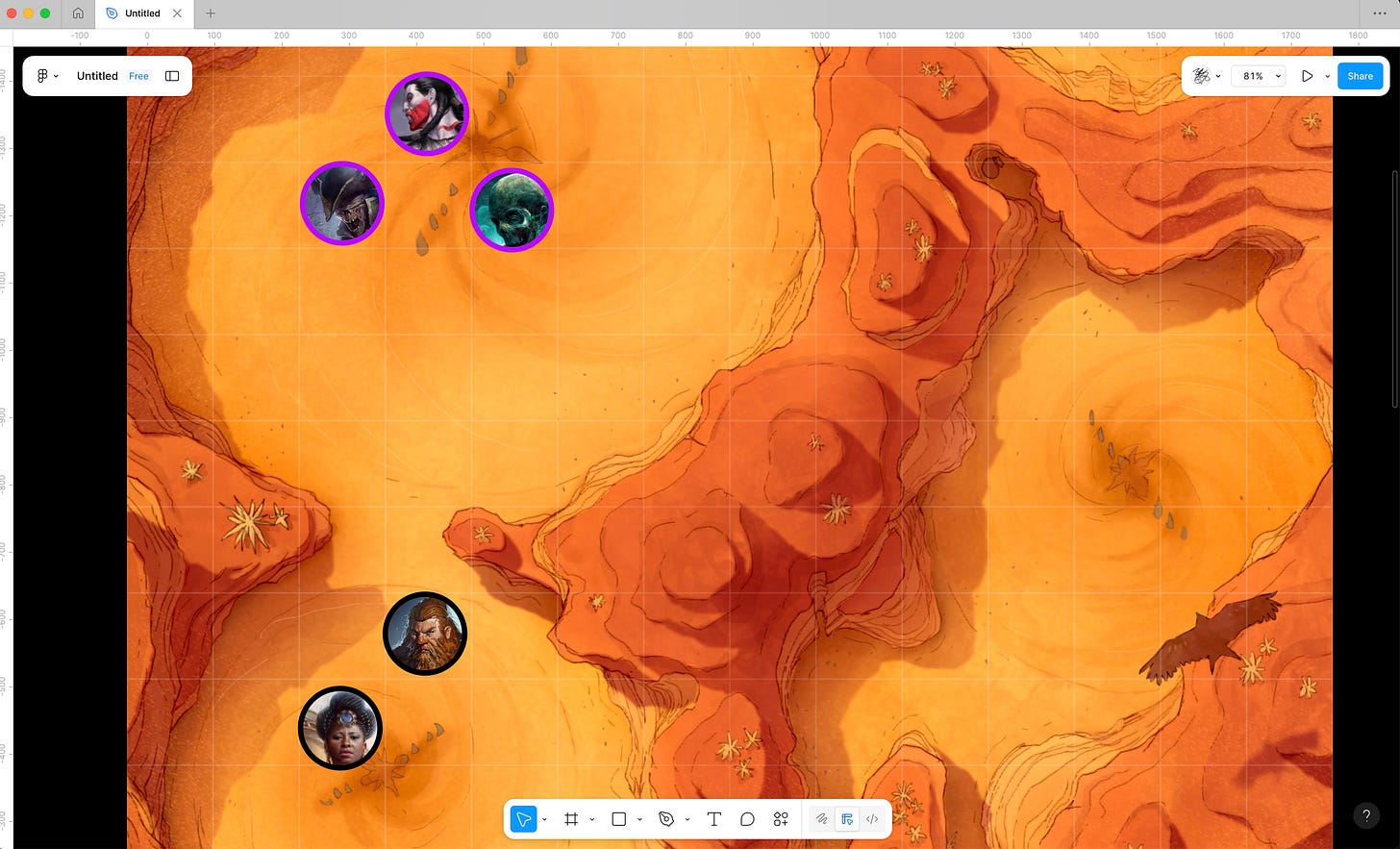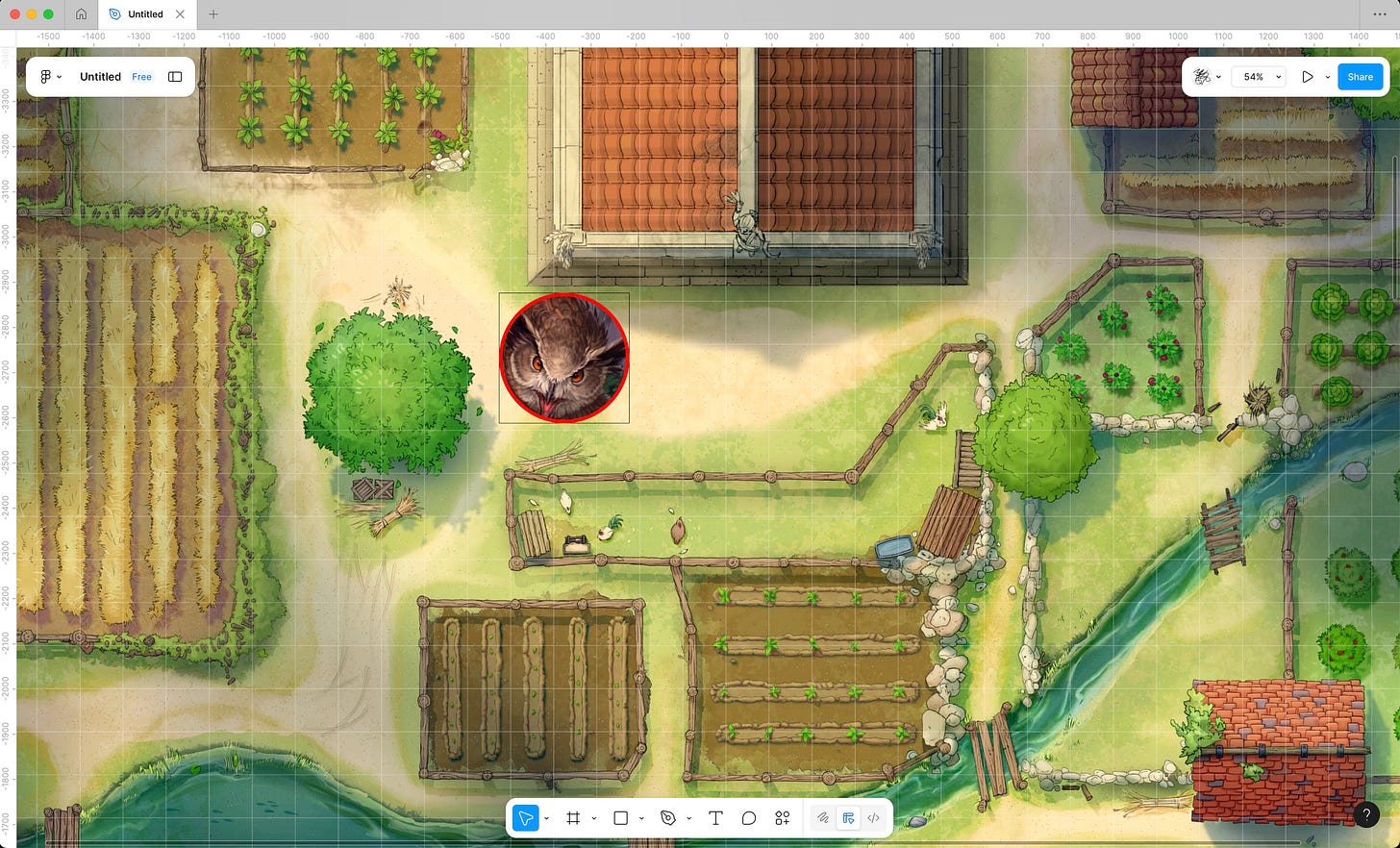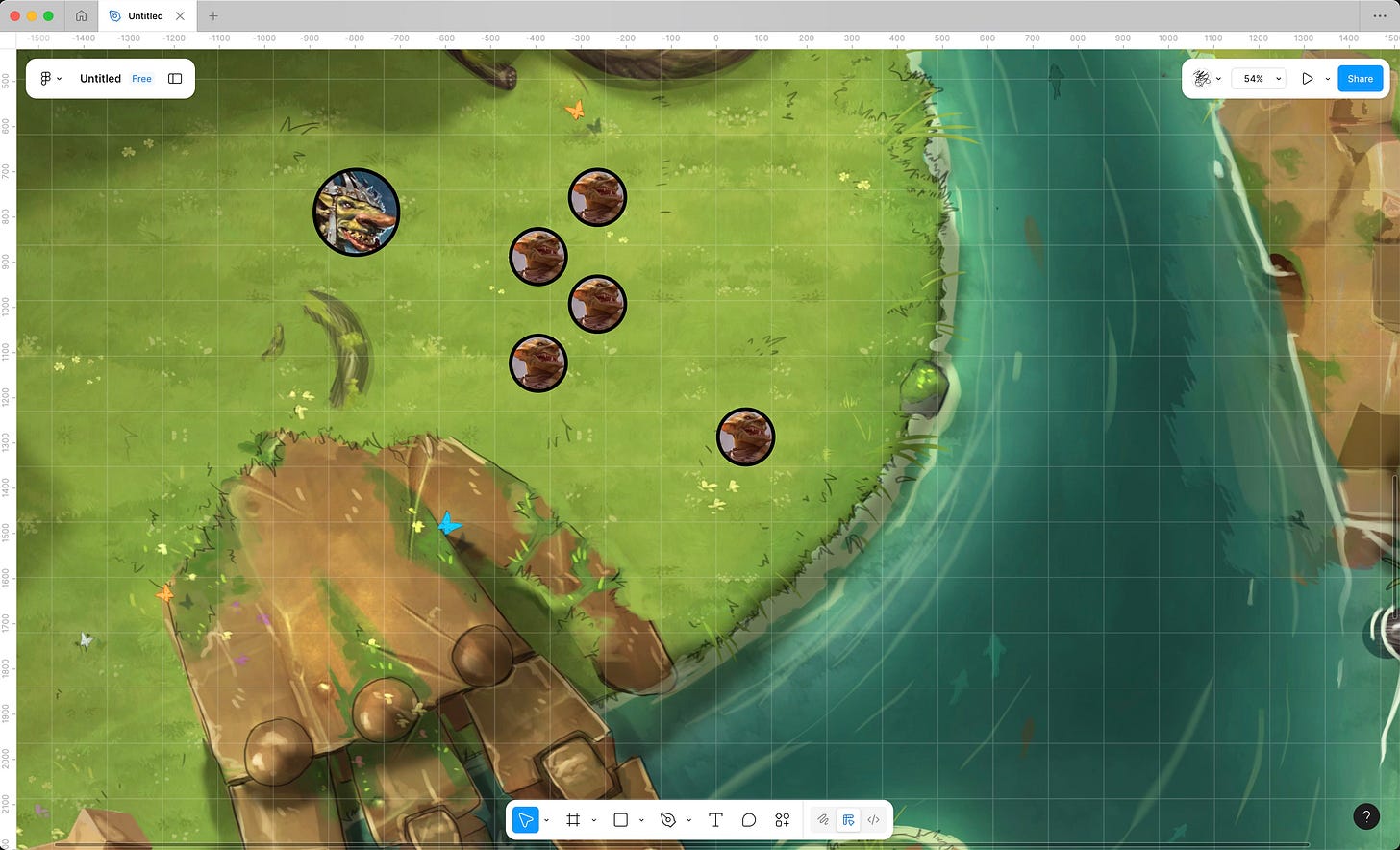Using Figma as a Virtual Tabletop
How to use Figma at your advantage.
Hey everyone! Today, I want to share a little creative twist I’ve been using for my solo RPG sessions — something a bit different from your usual virtual tabletop setup.
I’ve been using Figma, a popular UI design tool, as my personal virtual tabletop (VTT) for running combats and visualizing scenes. It started as an experiment, but it turned out to be one of my favorite ways to play.
P.S. I made a quick video demo that you can see here or at the end of the article
Why Figma?
Figma is a web-based design app used for creating websites, apps, and interfaces — but its features make it surprisingly handy for tabletop gaming, especially if you enjoy solo play or light visual aids during sessions.
Here’s what makes it so flexible:
An infinite canvas – You can zoom in or out endlessly, perfect for sprawling dungeon maps or close-up encounters.
Easy image management – Upload and arrange maps, character portraits, or tokens freely.
Visual customization – Add borders, colors, or effects to track conditions or differentiate characters.
Cross-platform and free – Works on Windows, macOS, Linux, or directly in your browser.
It’s Free - My current setup does not require using one the the paid tiers.
Setting Up Your Game Space
Getting started is easy. Go to Figma.com, create a free account, and open a new file.
I like to organize my setup into a few simple pages:
Battle Map – Where the session happens. Import your map image and lock it so it doesn’t move accidentally.
Assets – A place to store character art, monsters, and scenery.
Extras (optional) – A sandbox page where you can create or test new tokens before dropping them into your main scene.
Because Figma offers an infinite canvas, you can fit as many encounters or maps as you like on a single page, then pan or zoom between them as needed.
Creating Tokens in Seconds
One of the best parts of using Figma is how easy it is to create tokens.
Here’s my quick method:
Find a piece of artwork you want to use — character portraits, monsters, or NPCs.
Take a square screenshot or crop it to a square format.
Drop it into Figma.
Adjust the corner radius to make it circular.
Add a stroke (outline) — I usually go with an 8px black border for a clean token look.
You can also color-code tokens to represent different statuses:
🔴 Red for injured
🟢 Green for poisoned
🔵 Blue for asleep or frozen
Once you’ve got one token ready, just duplicate it for quick setup of enemy groups or allies. It’s fast and satisfying — especially during those tactical combat moments.
Managing the Scene
Figma’s left-hand panel lists every element on your canvas, which makes it easy to hide, group, or rearrange things. You can even lock background layers so only your tokens move.
If you like visual immersion, change the canvas background color — black for darker dungeons, white for bright landscapes, or anything else that fits the mood.
Zooming in and out feels natural and smooth, and you can keep all your maps in one file without ever running out of space.
Shared Play Possibilities
Even though I mainly use Figma for solo games, its collaborative features are a nice bonus. Since it’s built for teamwork, you can share a link to your project and let others join in — either as viewers or active participants who can move their own tokens.
That means if you ever want to run a small game with friends online, you already have the tools to make it happen — no extra software needed.
Why I Like It for Solo Play
For solo RPGs, I love having something visual when the action gets tactical. Figma lets me quickly sketch out where characters stand, visualize a battle, or track conditions without any setup overhead.
It gives me:
A clean and flexible space to map out encounters.
A way to track turn order and positioning visually.
Total control over how I organize and present my game.
It’s not about replacing other virtual tabletops — it’s about having another creative option in your toolkit.
Demo
Final Thoughts
If you enjoy tinkering, experimenting, and finding simple ways to enhance your RPG experience, give Figma a try as your virtual tabletop.
Whether you’re playing solo or testing out encounter ideas, it’s a surprisingly versatile tool that combines creativity and simplicity.
So what do you think? Will you give it a try? Let me know in the comments below, cheers!





This is amazing article. Great use of a free program. I likely won't try it for awhile, but eventually it will be helpful for a tactics game.
Thanks for sharing, this is a really clever use of this tool. Maybe I'll get more into using maps in my solo sessions